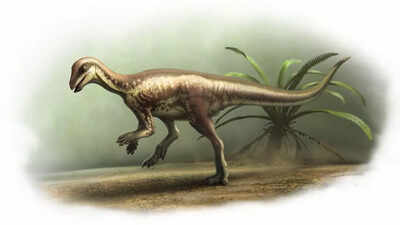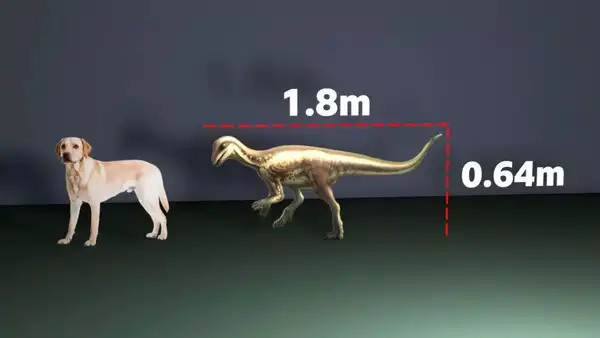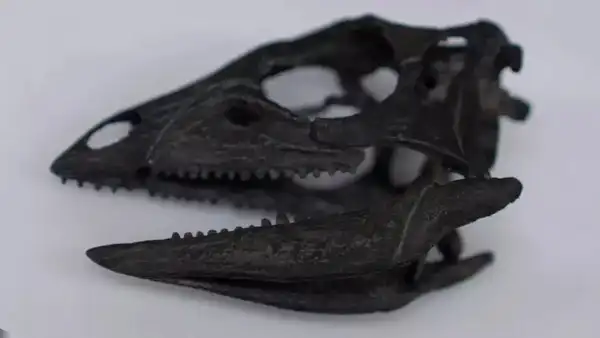
Scientists have uncovered fossils of a new dog-sized dinosaur species that lived alongside some of the largest dinosaurs ever known. This remarkable discovery sheds light on the diversity of prehistoric life and how smaller dinosaurs coexisted with gigantic species millions of years ago.According to The BBC, a study published in the journal Royal Society Open Science has identified this new dinosaur species, Enigmacursor mollyborthwickae, which was roughly the size of a Labrador retriever, with its tail making up half its length. It was originally classified as a Nanosaurus, but scientists now conclude it is a distinct species. The dinosaur is currently on display in the Natural History Museum (NHM)
Discovery of a unique dinosaur

Source: The BBC
The newly identified dinosaur, named Enigmacursor- meaning “puzzling runner” – was roughly the size of a modern-day dog. It was relatively small, measuring 64 cm in height and 180 cm in length, comparable to a Labrador retriever, but distinguished by its larger feet and long tail. It co-existed with dinosaurs like Stegosaurus and is estimated to have lived 150 million years ago. The scientists questioned the classification, so they visited the US to examine the original Nanosaurus specimen. However, they found that the specimen was incomplete, consisting of only a rock with bone impressions, making it impossible to confirm its identity.
Coexisting with other giant dinosaurs

Source: The BBC
Despite its small stature, this dinosaur was a thriving part of the ecosystem, running around the feet of enormous herbivorous and carnivorous dinosaurs. Its discovery provides new insights into how smaller species adapted to survive alongside massive contemporaries, highlighting a complex prehistoric environment.
The discovery of dinosaurs is of great significance for paleontology

Source: The BBC
The momentous discovery adds to scientists’ knowledge of dinosaur diversity, evolution, and behavior. It also challenges the notion that only larger dinosaurs could dominate these ecosystems and provides evidence that smaller species played very important roles. The discovery also continues to provide important data for examining deep-time evolutionary relationships.Also read | Shocking discovery! 230 giant viruses found lurking in Earth’s oceans; scientists say














